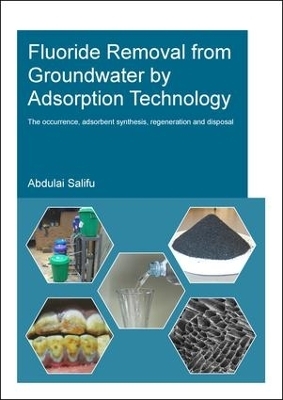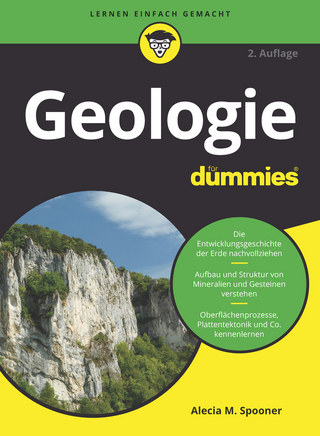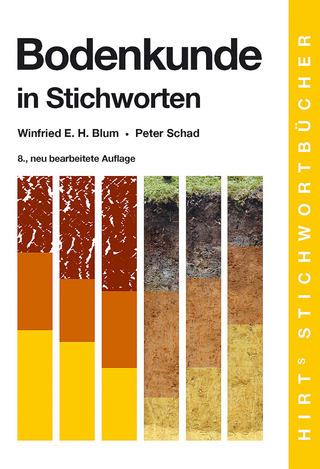
Fluoride Removal from Groundwater by Adsorption Technology
Crc Press Inc (Verlag)
978-0-8153-9207-1 (ISBN)
Based on principal component analysis, and saturation indices calculations, this thesis highlights that, the predominant mechanisms controlling the fluoride enrichment probably include calcite precipitation and Na/Ca exchange processes, both of which deplete Ca from the groundwater, and promote the dissolution of fluorite. The mechanisms also include F-/OH- anion exchange processes, as well as evapotranspiration processes which concentrate the fluoride ions, hence increasing its concentration in the groundwater. Spatial mapping showed that the high fluoride groundwaters occur predominantly in the Saboba, Cheriponi and Yendi districts.
The thesis further highlights that, modifying the surface of indigenous materials by an aluminium coating process, is a very promising approach to develop a suitable fluoride adsorbent. Aluminum oxide coated media reduced fluoride in water from 5. 0 ± 0.2 mg/L to ≤ 1.5 mg/L (which is the WHO health based guideline for fluoride), in both batch and continuous flow column experiments in the laboratory. Kinetic and isotherm studies, thermodynamic calculations, as well as analytical results from Fourier Transform Infrared Spectroscopy and Raman spectroscopy, suggest the mechanism of fluoride adsorption onto aluminium oxide coated media involved both physisorption and chemisorption processes.
Field testing in a fluoritic community in Northern Ghana showed that the adsorbent is also capable of treating fluoride-contaminated groundwater in field conditions, suggesting it is a promising defluoridation adsorbent. The adsorbent also showed good regenerability potential that would allow re-use, which could make it practically and economically viable. Additional research is, however, required to further increase the fluoride adsorption capacity of developed adsorbent.
Abdulai Salifu is a Civil and Environmental Engineer, and obtained his BSc. degree (Civil Engineering) from the Kwame Nkrumah University of Science and Technology (KNUST), Kumasi, Ghana. He obtained his Post-Graduate diploma degree (passed with distinction) in Community Water Supply and Sanitation, from Loughborough University of Technology (LUT), England (U.K) and his MSc. degree in Environmental Engineering from the University of Newcastle upon Tyne, England (U.K). He worked for several years in the water sector in Ghana as a Water and Sanitation Engineer, where he worked in multi-disciplinary team professionals comprising of; Hydrogeologist, Sociologists, Health and Hygiene Education Specialist, IT Specialist and Planners, involved mostly in the provision of water supply and sanitation facilities as well as health/hygiene education to rural communities and small urban towns. He was involved in the planning and implementation of several water and sanitation projects in the Northern region of Ghana, financed by several External Support Agencies (ESAs), including the World Bank, European Union (EU), Agence Francais de Developpment (AFD), UNICEF, Japanese International Corporation Agency (JICA) and the Canadian Development Agency (CIDA).
1 General introduction
2 Factors and mechanisms controlling the occurrence of high fluoride concentration in groundwater in parts of the Northern region of Ghana
3 Dynamic behaviour of fluoride adsorption onto aluminium (hydr)oxide coated pumice: laboratory-scale column studies, modelling, mechanism and adsorbent regeneration
4 Treatment of fluoride-contaminated groundwater using granular aluminium-coated bauxite
5 Aluminol (Al-OH) functionalized wood charcoal for treatment of fluoride-contaminated groundwater: Effect of wood source, particle size, surface acidity-basicity and field assessment
6 General conclusions, perspective, limitations and recommendations.
| Erscheinungsdatum | 23.11.2017 |
|---|---|
| Reihe/Serie | IHE Delft PhD Thesis Series |
| Verlagsort | Bosa Roca |
| Sprache | englisch |
| Maße | 170 x 240 mm |
| Gewicht | 589 g |
| Themenwelt | Naturwissenschaften ► Geowissenschaften ► Geologie |
| Naturwissenschaften ► Geowissenschaften ► Hydrologie / Ozeanografie | |
| Technik ► Bauwesen | |
| Technik ► Umwelttechnik / Biotechnologie | |
| ISBN-10 | 0-8153-9207-9 / 0815392079 |
| ISBN-13 | 978-0-8153-9207-1 / 9780815392071 |
| Zustand | Neuware |
| Informationen gemäß Produktsicherheitsverordnung (GPSR) | |
| Haben Sie eine Frage zum Produkt? |
aus dem Bereich


